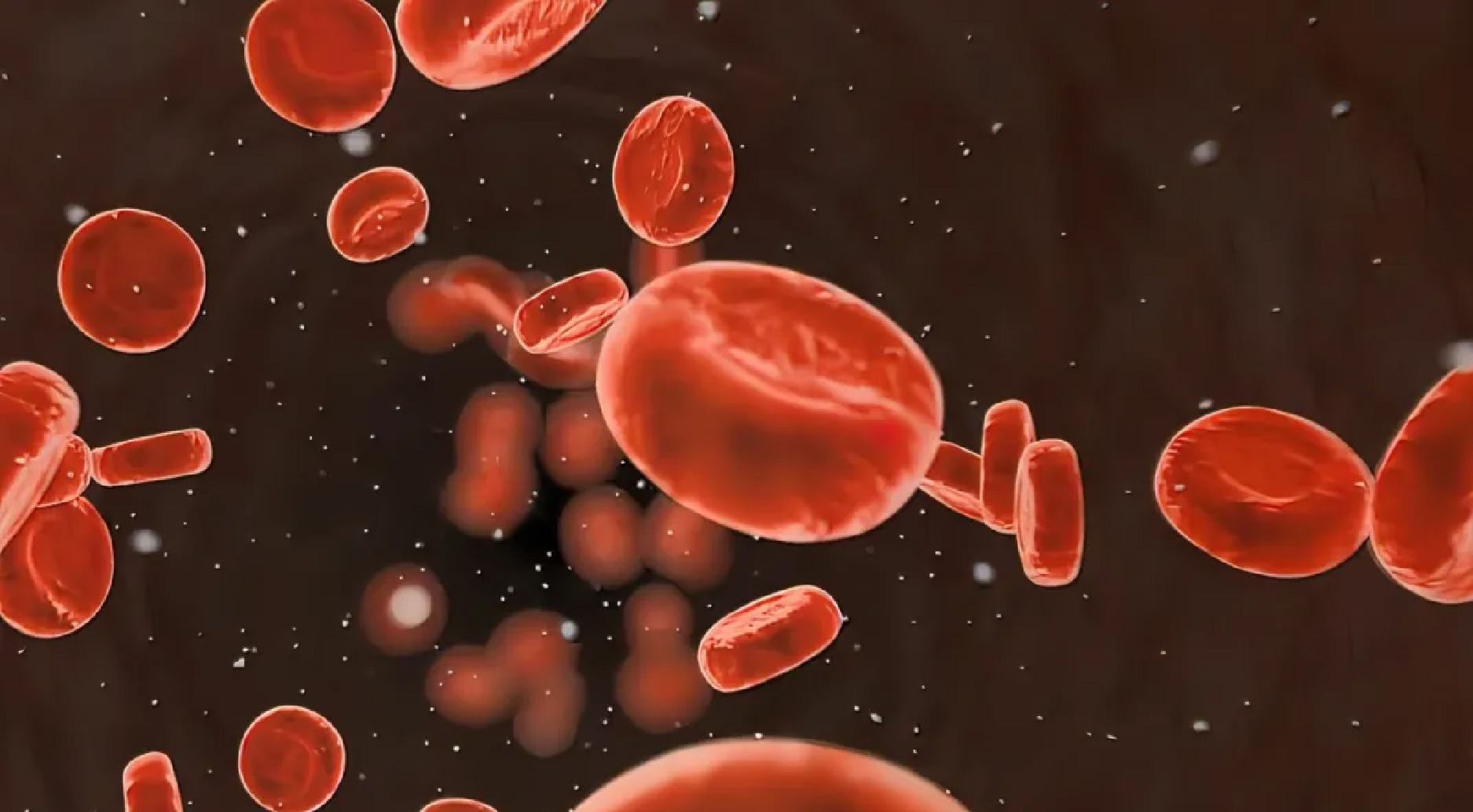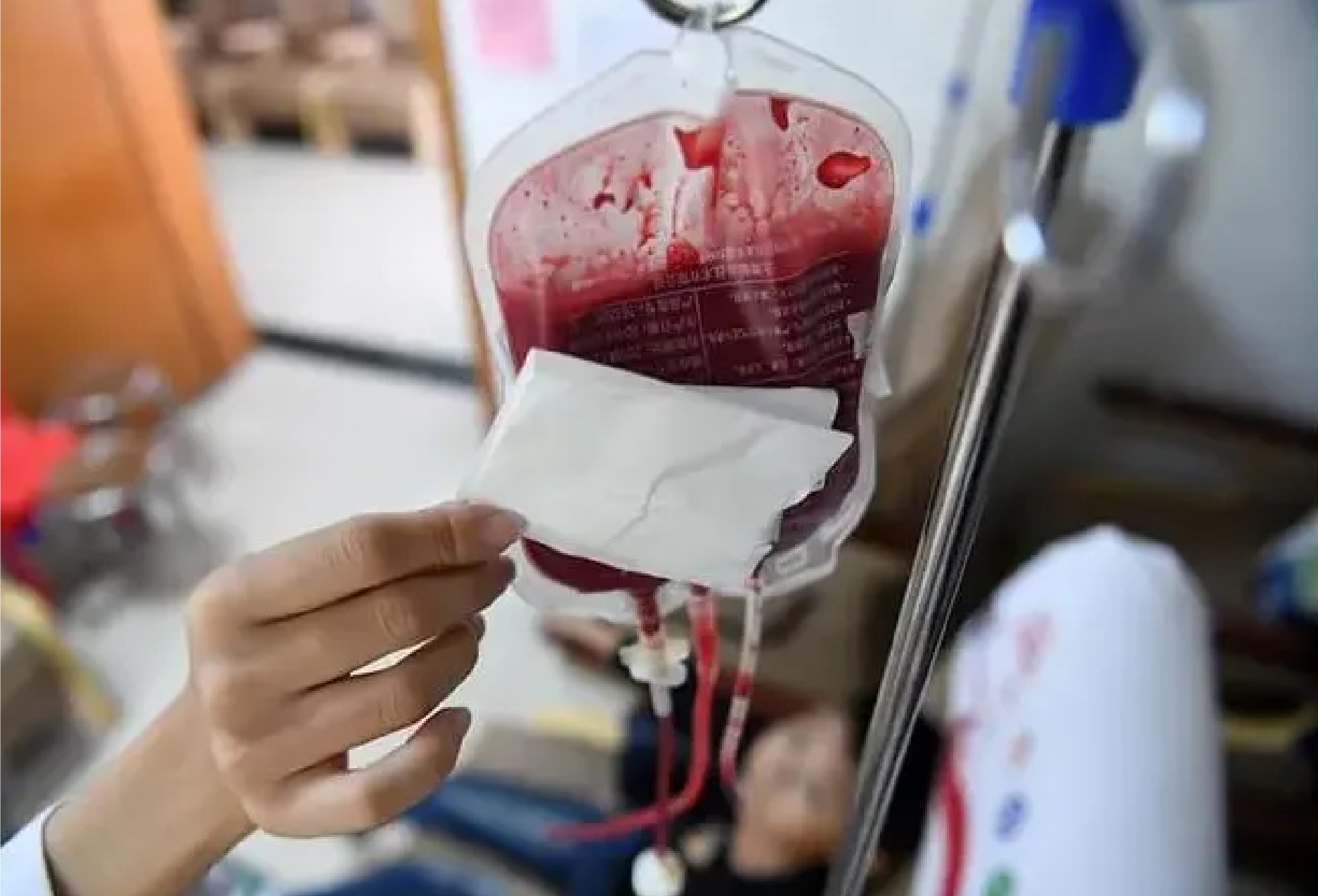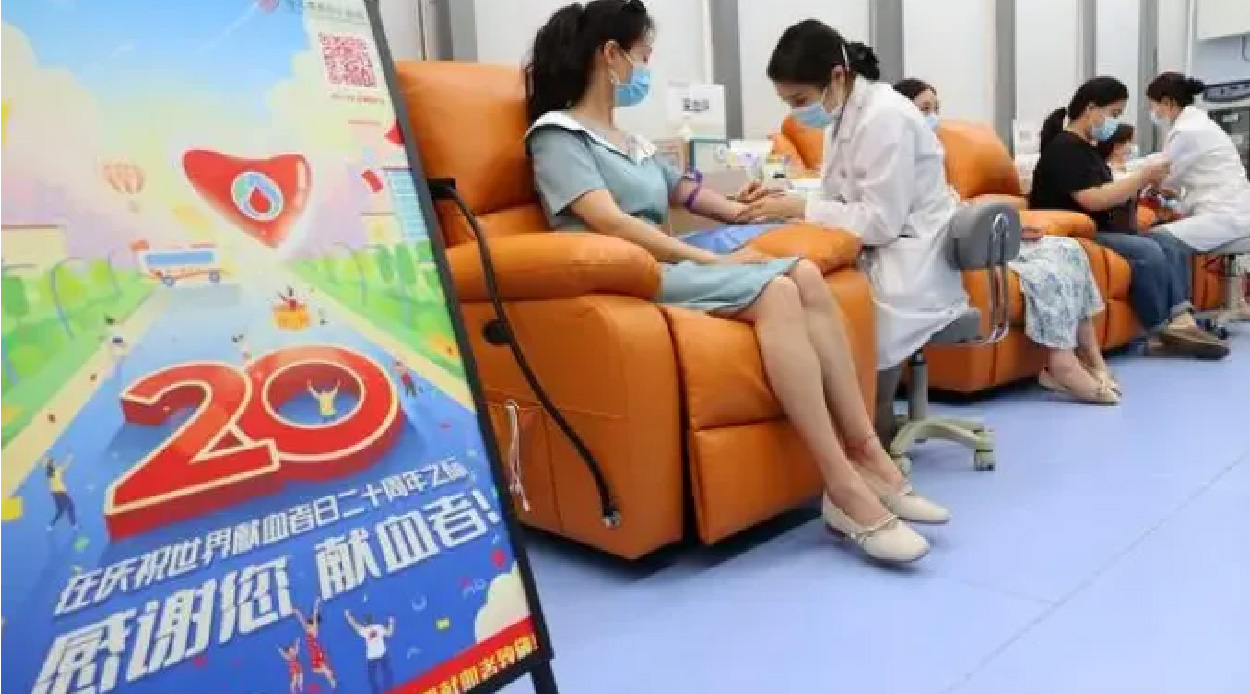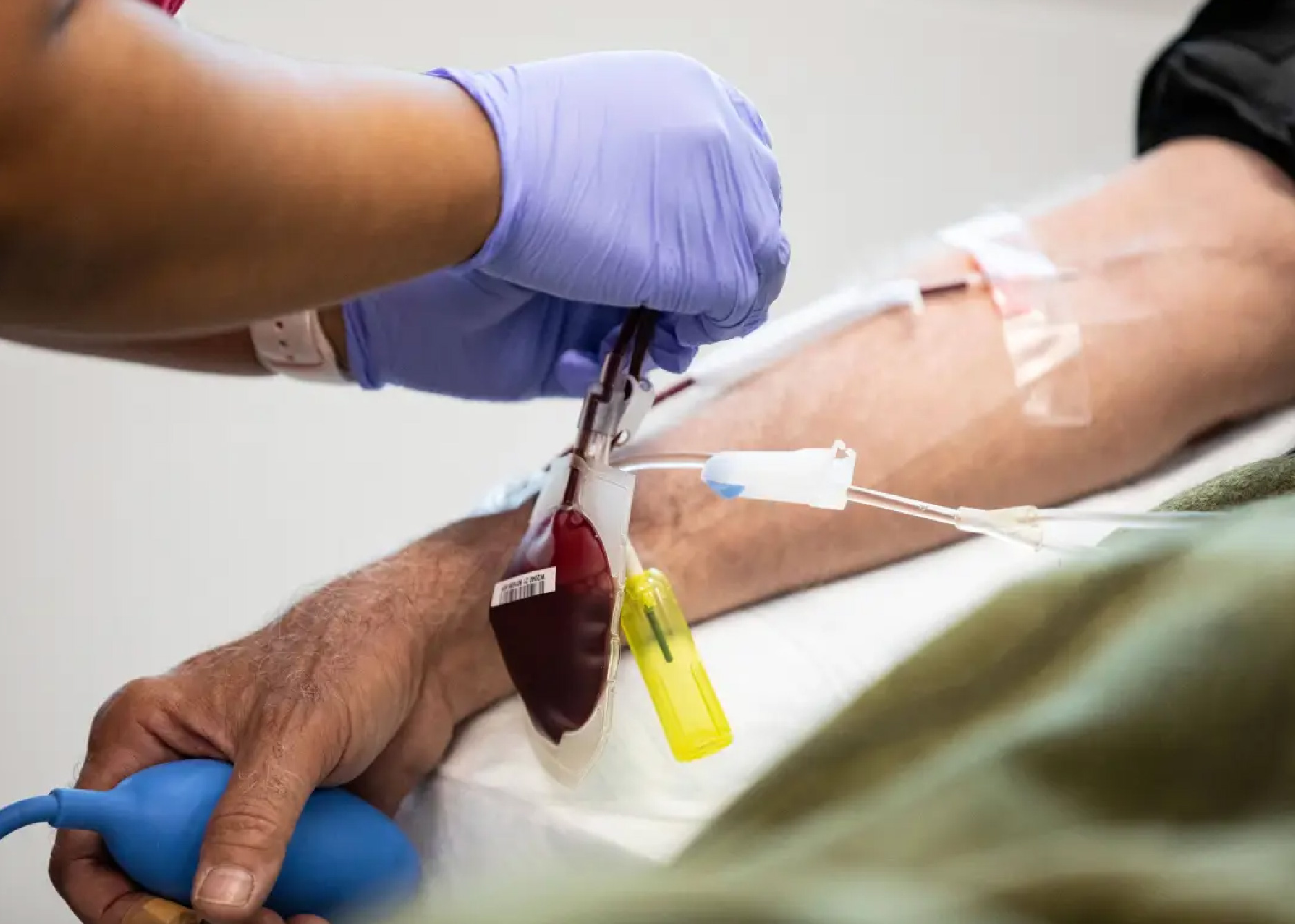According to the National Health Commission, 16.992 million people donated blood nationwide in China in 2023, and the amount of blood donated reached 28.921 million units. Both the number of blood donors and the amount of blood donated reached historic highs.
However, even though there are many blood donors, patients with blood disorders still face the problem of "finding blood", mainly because platelets are in short supply.
In response to the difficult situation of obtaining blood for patients with blood diseases, Professor ZHOU Weihua from the Department of Data Science and Management Engineering of Zhejiang University School of Management was interviewed by Southern Weekend and talked about the management of blood supply and demand.
|
ZHOU Weihua | 周伟华 School of Management, Zhejiang University |
||
|
|
||
|
|
|
Academic Background: Qiushi Distinguished Professor and Doctoral Supervisor of Zhejiang University. Currently director of the International Research Center for Data Analysis and Management of Zhejiang University and senior expert of University "Big Data + Analysis and Management" innovation team. Research areas: Logistics and supply chain management; supply chain finance. You can learn more about Prof. ZHOU Weihua’s academic background here |
Some patients with blood disorders face the problem of "difficulty in obtaining blood". Among the various blood components (a part of blood), the lack of platelets is the most difficult. According to a report by Yinchuan TV on July 6, 2024, the number of blood donors has decreased due to the hot weather, while the demand for clinical blood has continued to increase. The inventory of platelets in many hospitals in Yinchuan continued to decline, and the blood bank was in urgent need of blood. In fact, since the end of 2023, blood donation centers in Tianjin, Jiangsu, Shanxi, Shandong, Henan and other places have issued urgent inventory notices. The reserves of some blood groups have fallen below the warning line, and the state of "tight blood balance" has been broken in some areas.
According to the National Health Commission in February 2024, 16.992 million people donated blood nationwide in 2023, and the amount of blood donated reached 28.921 million units, an increase of 5.9% and 4.8% respectively compared to 2022. Both the number of blood donors and the amount of blood donated reached historic highs.
Why are there still difficulties in using blood if the number of blood donors and the volume of blood donated have reached record levels?
|
The Management of Blood Supply and Demand Must Be Improved |
The more blood we have, the better. Due to its short shelf life, any blood that is not consumed will expire and become unusable.
Why is there a surplus of platelets when supplies are low? Firstly, compared to whole blood, which has a shelf life of 30 days, platelets only have a shelf life of 5 days. In addition, it takes 2 days for the relevant tests to be completed and the time left for the hospital to make them available for clinical use is very short, often only 2-3 days.
This means that platelets are perishable products, i.e. products with a short life cycle. ZHOU Weihua, a professor at the School of Management of Zhejiang University, said in an interview that the management of perishable products such as fresh food and milk has always been a supply chain problem. The blood supply chain includes blood donors, blood stations, blood transfusion departments in hospitals, blood utilization departments and other links. The connection of supply and demand between each link is delayed and imprecise, making platelet management difficult.

|
Image source: ©千库网 |
Furthermore, the supply of platelets depends entirely on donations from unpaid blood donors, but the number and behavior of donors is quite uncertain, leading to a correspondingly unstable supply of platelets.
Platelets have become more difficult to manage and ship, and inventory management has become difficult. Hospitals and blood donation services must constantly monitor stock levels and reserve collection schedules in advance to ensure supply. In emergencies, costly emergency blood collection or temporary use is required to meet demand, placing greater demands on management and shipping.
|
“ |
The management of blood supply and demand is an issue that deserves great attention," emphasizes ZHOU Weihua. "However, in the medical system, blood management has received relatively little attention compared to other medical resources such as organ transplantation. If we pay more attention to blood management and optimize the processes of blood collection, storage, distribution and utilization, we can effectively improve the efficiency and fairness of blood utilization." |
|
Refined Management of Supply and Demand: Resolving Information Asymmetry and Meeting Supply and Demand |
In 2018, ZHOU Weihua got connected with the Hong Kong Central Blood Bank. The center faced two problems in managing platelets. One was that it was unable to reconcile the two requirements for general blood use and emergency use - how much blood should be sent to downstream hospitals and how much blood should be kept for emergency use. The second was that it did not know how to determine the number of platelets collected and produced each day and could not estimate the amount collected that day.
Similar problems with information asymmetry exist between the blood transfusion department and the hospital’s blood utilization department. The blood transfusion department is responsible for collecting the blood requirements reported by the various departments and then applying to the blood donation center after a summary. "The urgency varies from case to case. If the stock is insufficient, it depends entirely on the experience of the head of the blood transfusion department as to whose needs should be met first and how to balance the blood consumption of the entire hospital," says ZHOU Weihua.

|
Image source: 新华社 |
|
“ |
For the blood donation centers, the biggest challenge is to understand the exact needs of the hospitals and distribute them as fairly as possible. Therefore, I think the most important thing is to break down the information barriers between hospitals and blood centers," emphasizes ZHOU Weihua. |
|
|
"Some blood centers have broken through the barriers and can now view information such as blood inventory on the collaborative platform. It’s like shopping in a supermarket. After the supermarket system and the supplier system are connected, sales quantities and stocks can be viewed directly, leading to greater efficiency and transparency." |
In some hospitals, blood transfusion doctors use blood according to the principle of ensuring blood supply for critically ill patients, and clinicians make comprehensive decisions based on indicators such as blood pressure. To meet demand, some clinical departments in some hospitals report over-consumption of blood when blood supplies are low.
This phenomenon is called the "supply and demand game" in management theory. ZHOU Weihua explains that in order to solve the problem of blood product supply and demand, efforts should be made to coordinate supply and demand in addition to scientific decision-making. In current practice, the phenomenon of "supply and demand game" may occur when the supply side cannot meet the demand, that is, the demand side tends to exaggerate its demand.

|
Image source: 新华社 |
Is it enough to solve the problem of information asymmetry? ZHOU Weihua also pointed out that the link between blood supply and demand includes the supply and demand sides.
On the supply side, we need to focus on how to effectively expand the supply. Currently, most blood is obtained through the good will of the public and blood donations. So the challenge for blood donation centers is to maintain a high-quality donor team and at the same time motivate people to donate blood. This is different from the incentive mechanism in business. How to effectively motivate participants in the context of the common good is a question worth exploring.
On the demand side, there are still many challenges on how to efficiently meet demand, reduce time and improve the efficiency of blood utilization. In addition to breaking down the information barriers between blood supply and demand and solving the problem of information asymmetry, the standardization of blood use must also be considered.
Many physicians in the blood transfusion department have difficulty recording the indications for blood use. Some patients have normal blood values but are already bleeding slowly into the abdominal cavity. At this point, an experienced clinician needs to make a comprehensive judgment based on indicators such as blood pressure.
|
“ |
There are medical guidelines, but they are still relatively crude when applied to specific cases. There is still a lack of detailed and clear standards for the amount of blood needed for different types of diseases," ZHOU Weihua introduced. |

|
Image source: ©千库网 |
In blood distribution, the standards for blood use still need to be optimized. The medical system still lacks scientific indicators to measure the efficiency of blood management. The relevant departments should consider introducing such indicators so that the central blood banks and hospitals can better identify problems and make continuous improvements.
In addition, to ensure the effectiveness of blood transfusion, the process of blood transfusion management still needs to be improved. When it comes to efficiency and fairness, how blood can be managed and distributed effectively, how it is prioritized and how it can benefit as many people as possible is an important decision issue. While increasing the number of blood donations, it is therefore even more urgent to strengthen the sophisticated management of blood supply and demand.
|
Two Innovative Solutions Solve the Problems of Managing the Blood Supply Chain and Help with Scientific Decision-making |
In response to the above-mentioned problems of blood product collection, inventory and distribution, ZHOU Weihua’s team used the mathematical method of stochastic dynamic programming, introduced many relevant parameters, modeled the decision-making process of blood collection and supply, and formed a set of algorithms for blood collection and distribution, which can provide predictions on the quantities of blood collection, production, demand and supply, and help blood collection and supply units make scientific decisions. The research result was published in the leading international journal in the field of management and tested in two tertiary hospitals in Zhejiang.

Scheme 1
The solution solves the problem of "joint decision-making on whole blood collection, production and inventory control" of the upstream central blood bank and the problem of "blood product distribution" of the downstream hospitals.
|
01 |
In Scheme 1, they constructed a "joint decision making model for whole blood collection, platelet production and inventory control" to solve the problem of "joint decision making for whole blood collection, production and inventory control" in the centralized blood bank, and proposed a heuristic algorithm with the same structure as the optimal strategy to quickly compute efficient heuristic strategies. |
|
02 |
In Plan 2, Professor ZHOU Weihua’s team proposed a data-driven algorithm for blood product allocation based on "prediction + decision making", which is based on big data about patients’ vital signs, transfusion records and transfusion effects, and provides scientific recommendations for the amount of blood product transfusion for patients considering blood product supply shortages. |
These two solutions are used in practice and help to improve the efficiency of blood supply in blood centers and reduce the imbalance between supply and demand of blood products. Currently, the team is still developing targeted new solutions for management decision-making by combining decision-making tools with business processes according to local conditions in order to maximize the impact of the research results.
- We extend our appreciation to Professor ZHOU Weihua for his insightful contributions to the research on blood supply chain management. His work has played a critical role in addressing key challenges in the optimization of blood collection and distribution processes.
- You can read the original article in Chinese here